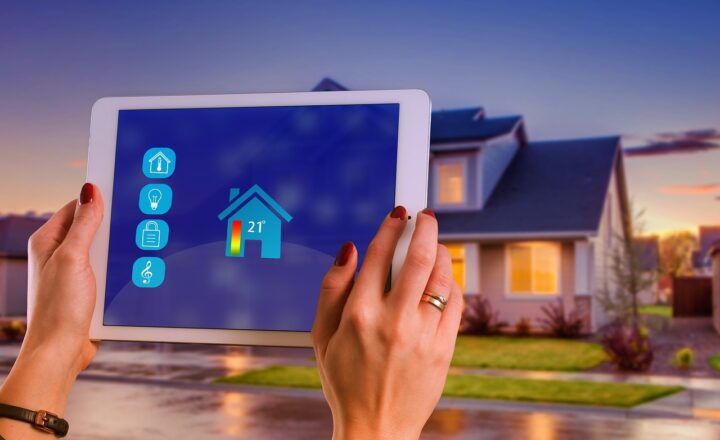Introduction to the Internet of Things (IoT): Building Smart Applications
November 12, 2024

The Internet of Things (IoT) is a revolutionary technological paradigm that is reshaping how we interact with the physical world. By connecting everyday objects to the internet, IoT enhances functionality, collecting and exchanging data to improve our daily lives and streamline operations across various industries. From smart home devices to industrial automation, IoT presents a multitude of opportunities and challenges.
1. Understanding IoT: What is it?
The Internet of Things refers to a network of physical objects that are embedded with sensors, software, and other technologies to connect and exchange data with other devices and systems over the internet. These ‘things’ can range from household appliances like refrigerators and thermostats to complex industrial machinery.
IoT creates smarter environments by allowing data to flow freely among devices, enabling automated responses to changes in the surrounding conditions. For example, a smart thermostat can learn your preferences and adjust the temperature accordingly, leading to increased comfort and energy savings.
2. Key Components of IoT
Several core components make up the IoT ecosystem:
- Devices/Sensors: These are the physical objects equipped with sensors that gather data. They can include anything from wearables like fitness trackers to industrial sensors monitoring equipment performance.
- Connectivity: IoT devices need a way to connect to the internet, which can be accomplished through Wi-Fi, Bluetooth, cellular networks, or other protocols such as LoRa and Zigbee.
- Data Processing: Once data is collected, it must be processed. This could be done on the device itself (edge computing) or sent to the cloud for more extensive processing.
- User Interface: Users need a way to interact with the IoT system, whether through a mobile app, web interface, or voice commands.
Each component plays a crucial role in ensuring the IoT system operates efficiently and effectively.
3. Applications of IoT in Smart Homes
One of the most popular domains of IoT is the smart home, where home devices can be controlled remotely and can communicate with each other. Here are some prime applications:
- Smart Thermostats: Devices like the Nest Learning Thermostat adjust heating and cooling based on occupancy patterns, optimizing energy use and enhancing comfort.
- Smart Lighting: Systems such as Philips Hue allow homeowners to control lighting via smartphone apps and automate lighting schedules, improving both convenience and security.
- Security Systems: IoT-enabled security cameras and doorbells provide real-time monitoring, alerts, and video feeds accessible from anywhere, enhancing home security.
These smart applications illustrate how IoT can make homes more efficient, secure, and user-friendly.
4. Industrial IoT: The Future of Manufacturing
The Industrial Internet of Things (IIoT) is transforming how industries operate, leading to increased efficiency and reduced costs. Industries can leverage IoT technologies for:
- Predictive Maintenance: IoT sensors can monitor equipment health in real-time, predicting failures before they occur and significantly reducing downtime.
- Supply Chain Management: IoT applications can track inventory levels, shipments, and delivery, enhancing visibility and control over the supply chain.
- Process Optimization: Sensors can provide insights into production processes, allowing businesses to make data-driven decisions that enhance efficiency and reduce waste.
As industries embrace IoT technologies, they unlock new levels of productivity and innovation.
5. Challenges in Implementing IoT
Despite its advantages, IoT deployment presents various challenges:
- Security Concerns: The growing number of connected devices increases vulnerability to cyberattacks. Comprehensive security measures must be integrated at every layer of the IoT architecture.
- Data Privacy: IoT devices often collect sensitive information. Ensuring that this data is handled responsibly and in compliance with regulations like GDPR is essential.
- Interoperability: The variety of protocols and standards can create compatibility issues. Ensuring different devices can communicate effectively requires industry collaboration and standardization efforts.
Navigating these challenges is crucial for organizations looking to leverage IoT technologies successfully.
6. Building Smart Applications: Best Practices
To build effective IoT applications, consider the following best practices:
- Start with a Clear Objective: Identify a specific problem that IoT can solve. Understanding user needs and goals will guide the design and functionality of your application.
- Prioritize User Experience: Create an intuitive interface that allows users to control and interact with their devices easily. A positive user experience drives adoption and satisfaction.
- Ensure Scalability: Design your application architecture to handle an increasing number of devices and data as your IoT implementation grows.
- Implement Robust Security Measures: Secure all data transmissions and ensure that user data is protected, considering encryption and access control strategies.
By adhering to these best practices, developers can maximize the effectiveness and reliability of their IoT applications.
Conclusion
The Internet of Things is at the forefront of a technological revolution, paving the way for smarter homes and businesses. By understanding the components, applications, and potential challenges of IoT, individuals and organizations can create innovative smart applications that improve everyday life and operational efficiency. Embracing the opportunities offered by IoT will be crucial in staying competitive in the rapidly evolving digital landscape. As the landscape of IoT continues to expand, so too do the possibilities for building transformative applications that cater to a connected world.








